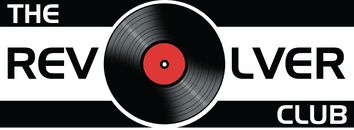- About Us
- Locations
- Events
- Community
- Vinyl Records
- Turntables
- Stereo Components
- Home Theater
- Music Production
- DJ
- Watches
- Guides


Introduction to MIDI Keyboards:
'Musical Instrument Digital Interface' or MIDI is a language that enables interaction between computers, electronic musical instruments, and other related audio equipment.
A computer or synthesizer receives data from a MIDI keyboard and interprets it to produce sound. The majority of MIDI controllers lack speakers; hence they are soundless by themselves. To make any form of music, they must be connected to a computer.

As opposed to using the piano roll in a DAW, a MIDI keyboard enables you to play virtual instruments, synthesizers, and/or samples like a real piano. Computer's produce a "static" sound, MIDI provides your music with a much more authentic and natural tone.
Understanding MIDI keyboards:

• MIDI keyboards with lower prices often include 13 to 25 mini-sized keys and a few drum pads. These keyboards are perfect for people who have little space or a limited budget.
• For a little bit more money, you can purchase 49–61 full-sized keys. Some keyboards might have velocity-sensitive keys, meaning you can get different results depending on how hard or soft you press the keys. While other keyboards may lack this feature altogether.
• Weighted keys, aftertouch, drum pads, LED screens, MPE support, and DAW integration are a few of the features and nice-to-haves available on even more expensive MIDI keyboards.
Key Weight and Action

Semi Weighted
Semi-weighted locks combine a spring mechanism with weights attached to each key. A pianist will find it almost effortless to press the key. They do, however, feel lethargic as they stand back up. Because of this, it might be challenging to execute some piano techniques, such as a glissando or fast repetition.
Fully weighted
Similar to semi-weighted action, fully-weighted has extra resistance to enhance the playing experience. The keys on these keyboards usually have the same weight. It also includes stronger return springs and weights underneath the keys to increase resistance. Here, the pianist should continue to develop their playing endurance.
Hammer action
These keyboards aim to produce the most accurate touch experience possible. They are constructed with hammer mechanisms mounted beside the weights to do this. Each key's resistance and feel are greatly improved, making them feel different. For instance, some keyboards mimic a real acoustic piano by having more resistance in the bass notes and less resistance in the high notes. This is what we mean by "scaled hammer action".
Connectivity Options:

MIDI IN
At the rear of the keyboard, there is a cable interface with five-pin connectors known as the MIDI DIN port. Despite becoming the industry standard for MIDI connectivity, these connectors still have a few drawbacks that made a place for USB ports on MIDI keyboards. One of them is that this kind of cable only allows for one-way data exchange. That means it flows from a MIDI "in" connector to a MIDI "out" connector.
USB
With this USB output, you should be able to connect your MIDI keyboard to your PC or Mac notebook using a USB type A or B printer cable. That's not all, the presence of the port should also allow you to connect your MIDI keyboard to other smaller devices such as an iPad provided you have a lighting connector.
Bluetooth
For many years, cable devices have been the norm for connecting a computer to a MIDI keyboard. But MIDI keyboards with Bluetooth compatibility enable audio transmission via a wireless channel. If your keyboard is not Bluetooth compatible, you can still connect wirelessly if you have a MIDI Bluetooth adaptor. To accomplish this, make sure your equipment supports Bluetooth transmission. However, depending on the module, Bluetooth may cause more latency and, as a result, a worse overall playing experience.
Essential Features and Functions:

Octave and Transposition Controls
Octave and transposition controls are present on even the most basic MIDI keyboards. You can go up or down a semitone at a time using the transposition controls. You can transpose your keyboard, for instance, up one semitone so that pressing C on the keyboard will tell the computer to play C#.
The main difference between semitone transposition and octave transposition is that semitone transposition moves up and down one semitone at a time, whereas octave transposition moves one entire octave at a time.
Modulation and Pitch Bend Wheels
You can also find pitch bend and modulation wheels. After plugging in your keyboard, both of these controls often function with your DAW automatically. If not, most DAWs make it easy to assign them to the right parameters.
Your ability to use these wheels depends on the virtual instrument you are using. For instance, while some virtual instruments use the mod wheel to significantly alter the sound, others don't. The pitch bend wheel for vibrato also may or may not be used by some virtual instruments.
FAQs
MIDI keyboards come in various sizes, from compact 25-key models to full-sized 88-key ones. The number of keys you need depends on your preference, playing style, available space, and the complexity of the music you want to create. Many professionals prefer a full-sized keyboard, while others find smaller models more portable and practical for specific uses.
Yes, most MIDI keyboards are compatible with smartphones and tablets, especially those equipped with USB, Lightning, or Bluetooth connectivity. This allows you to use music production apps on your mobile devices.
Many smaller MIDI keyboards can draw power from a computer via their USB connection, making them more portable and practical. Larger or more feature-rich MIDI keyboards with additional controllers or LEDs may require external power sources.
MIDI over USB allows you to connect your MIDI keyboard to your computer directly. Traditional MIDI cables, on the other hand, have 5-pin DIN connections and require MIDI interfaces to connect to a computer or other MIDI devices.





